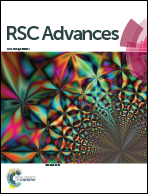Review of the synthesis of acyclic and cyclic oxime ethers
Abstract
Oxime ethers have attracted much attention due to their potential biological activities and wide variety of synthetic applications. Developing more efficient methods for the synthesis of oxime ethers has been the subject of numerous of papers in recent years. This review surveys literature methods for the synthesis of acyclic and cyclic oxime ethers.


 Please wait while we load your content...
Please wait while we load your content...